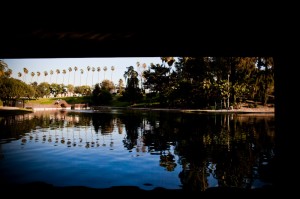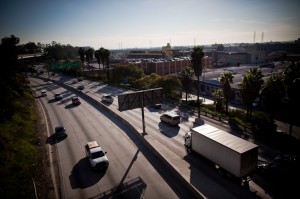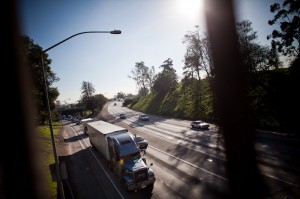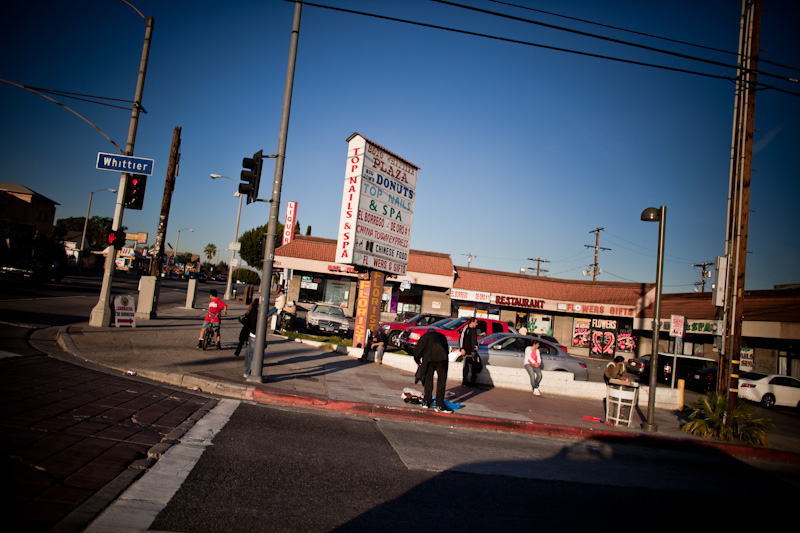An Invitation to Journalists 27 Feb 2013 11:26 AM (12 years ago)
If you are a journalist, a student or an educator, the news industry’s business-model problem looms over your work and aspirations.
It’s a challenge and an opportunity, but wouldn’t it be nice if you didn’t have to deal with it at all?
In this crowd-sourced era, journalists may not need a business model so much as a platform to build community around.
Similar to, for example, the Wu Tang Clan.
Be like a band
Please consider Newsdesk available to you for free as an open, shared platform for your own work, and as a vehicle for your community-building efforts.
To create a rough analogy — record your own album, book your own tour, and build that fan base.
You can use Newsdesk.org to publish reporting, build an audience, recruit donors, crowdfund your reporting expenses, and sidestep the intense labor of building a website and getting nonprofit status from the IRS.
Newsdesk.org’s free infrastructure services for journalists include:
- 501(c)(3) status, through our fiscal sponsor Independent Arts & Media, enabling you to apply for grants and receive tax-deductible donations
- Hosted technology services, via the Investigative News Network’s Project Largo website platform.
- A personal @newsdesk.org email address
- Back-end website access enabling you to write, edit and publish your own content
- A personal author/portfolio page
- Personal and group branding options, including the use of subdomains (health.newsdesk.org, mytown.newsdesk.org, etc.)
Our goal is simple — to give you a platform for your public-interest work, with as few hangups and as little friction as possible.
We are committed to journalism’s public-interest role in our democracy. As the news industry continues to go through cataclysmic change, the URL www.newsdesk.org and its resources are available to independent producers who want to explore public media online.
- If you’d like to get involved, please fill out this short form.
- Your questions are welcome at josh@newsdesk.org. I founded Newsdesk and now am more in the role of a steward or caretaker.
Be like a hacker
In admiration of peer-driven hacker spaces, the following guiding principles provide a useful framework for any collaborative work you pursue on Newsdesk.org:
- Excellence. Commit to excellence and vision in your work as a journalist. Collaborate generously, respect boundaries, and cherish and care for the shared resource that this site aspires to be. This includes sharing in quality-control duties.
- Do-ocracy. If you want it done, do it yourself! You do not need permission to publish, or to experiment with content, form, medium or practice.
- Consensus. If something you want to do adds up to major changes to the site, including its design, character and quality, ask your peer what they think. Anything major like that would most likely require peer consensus.
Voter’s quick reference to San Francisco’s mayoral candidates 7 Nov 2011 8:56 AM (13 years ago)
• Download and print the 2011 San Francisco mayoral-candidate voter guide.
The document is a summary of research produced by University of California’s Hasting College of the Law and The San Francisco Public Press. The voter guide was produced by Newsdesk.org.
Please spread the word to other San Francisco voters, and thank you for your support of this nonpartisan voter resource.
• Download the voter-guide PDF (<400k)
West Oakland keeps fighting for cleaner air 12 Sep 2011 2:38 AM (13 years ago)
Two years after Newsdesk.org first examined high levels of air pollution in West Oakland, progress towards helping this community breathe easier is moving slowly. Thorny projects, including cleanups at the port and a local Superfund site, are hard to keep moving.
Los Angeles neighborhood bears the brunt of air pollution 25 Aug 2011 11:32 AM (13 years ago)
By Jasmin López, special to Newsdesk.org | Crowdfund this story on Spot.us

Photo: Zackary Canepari
As summer temperatures rise, so do fears of asthma and other illnesses caused by all the air pollution converging on the east Los Angeles community of Boyle Heights.
With its proximity to freeways, industrial sites and shipping corridors, activists say the geography of Boyle Heights brings a disproportionate health burden to residents.
Determined to reduce the adverse health effects caused by air pollution, residents and activists of this historically immigrant community are taking proactive and innovative measures to improve their environment.
“It’s a low-income, mostly transit-dependent community, there’s a lot of walking that happens, there are a lot of people that are out, being mobile through that pollution,” said Vanessa Rodriguez, associate director at the Alliance for a Better Community.
Rodriguez said Boyle Heights wasn’t designed for a mix of residential and industrial uses, nor the density of traffic it bears today.
“A lot of their central arteries are being used as thoroughfares,” she said. “The freeways that dissect the community, their entrances and exits cut up children’s routes to and from schools.”
One community group is installing air filters and monitoring devices in schools, hoping to draw attention to the issue.
The Air Quality Advancement Project of Mothers of East LA is funded by settlement money from a class-action lawsuit, and will install high-performance air filtration systems in seven Boyle Heights schools, and study air quality in and out of the classrooms.
“It’s an opportunity to get us on the radar regarding the injustice that is happening. We’ll be able to really validate what we’ve been claiming,” says Diana del Pozo-Mora, MELA’s executive director.
Health advocates are particularly concerned about ozone and particle pollution from traffic, which recent studies link to childhood asthma, hypersensitive allergies, infant mortality, and a variety of respiratory illnesses. Diabetics, people with heart or lung diseases, older adults, children and low income communities are at greater risk, especially when they are physically active.
Los Angeles was recently ranked by the American Lung Association as one of the most polluted cities in the nation, with several vulnerable and disadvantaged communities at greater risk for exposure to ozone and particles [PDF] .
With plans underway to expand the nearby Port of Long Beach (the largest source of air pollution in California, combined with the Port of Los Angeles) and the 710 freeway, residents face an even greater density of cargo ships, loading docks, diesel trucks and trains.
Activists say that so far, little has been done to address the health impacts on neighboring communities.
“There is a huge body of information to support that living in close proximity to polluting sources, puts one at great risk. The current level of standards doesn’t protect people,” said Bonnie Holmes-Gen of the group’s California office.
Bill Gallegos, executive director of Communities for a Better Environment, claimed that official statistics “don’t even begin to capture” the high rates and impacts of asthma, cancer, heart disease, pregnancy and childbirth complications, and respiratory problems.
“The county health system is struggling to survive, just to meet people’s basic needs,” he said. “With all these budget cuts it looks like what we’re facing is going to get worse.”

Beneath the 5 and 10 freeways, a view of Hollenbeck Park. Photo: Zackary Canepari

Photo: Zackary Canepari

Photo: Zackary Canepari

Mission Street on the north side of Boyle Heights. Photo: Zackary Canepari
Missed EPA grant stalls West Oakland brownfields cleanups 29 Jul 2011 9:52 PM (13 years ago)
After more than a decade of getting approved for U.S. Environmental Protection Agency grants to remediate “brownfields” (contaminated properties), Oakland has been turned down.
This is the first such rejection in a long time – and it will delay both cleanup work and possible development in West Oakland.
Residential lead pollution cleanup in West Oakland will use new green technology 24 Jun 2011 12:20 AM (13 years ago)
Soil polluted with lead has long plagued the South Prescott neighborhood of West Oakland. But cleanup is finally getting underway.
This Saturday, June 25, the community is invited to learn more about the new green technology this project will use to clean up residential properties there.
‘Right Beneath Our Feet’: The Toxic Tour returns to Oakland 19 May 2011 10:08 AM (13 years ago)
By CB Smith-Dahl
Editor’s Note: Newsdesk.org is teaming up with Oakland Local and Spot.Us for a return to the West Oakland community covered in 2009’s award-winning “Toxic Tour” series.
Thinking about planting a garden this spring? Many West Oakland residents are doing the same — unaware that there is lead and cadmium in the soil and perhaps an old gasoline tank right under their driveway.
When the soil is contaminated, it’s hard for any neighborhood to improve its economic lot. With a history of mixed use zoning, dumping, and neglect due to decades of environmental racism, this neighborhood is working on cleaning up its toxic industrial legacy.
West Oakland Toxic Tour II – Right Beneath Our Feet
In partnership with Oakland Local, Newsdesk.org’s Toxic Tour project returns to West Oakland in 2011, to build on the stories, issues and community responses covered in 2009.
Toxic Tour I (mainly focusing on air pollution) was nationally recognized with a Society of Professional Journalists Sigma Delta Chi Award for Excellence in Journalism for our hyperlocal, hard-hitting, and high-quality journalism.
This time, we’ll create a series of installments in the Summer/Fall of 2011. At least four articles (up to six, if funding goals are exceeded) will focus on contaminated land in West Oakland, and will combine text reporting with photography, audio and video.
An overarching map will also be created to bring together media from the articles with data from government and community sources. The whole series will also run on popular mobile devices.
Spot.Us funding will be combined with support already secured from the Society of Environmental Journalists to make this project a success. This series is being produced and distributed in partnership with Newsdesk.org.
QUALIFICATIONS
Lead Reporter: CB Smith-Dahl
CB Smith-Dahl is an award-winning filmmaker, photographer, and educator who has always put the community at the center of her work. She is a former Artist-In-Residence at LA’s Skid Row Housing Trust and has significant experience as a community researcher. In 1997, she founded Community Bridge Video, a company that specializes in participatory media. She is a Facebook regular and posts semi-regularly on Twitter as MsSmittyB. As Oakland Local’s Community Media Manager, she creates new media content for the site and teaches and engages youth and community members in useful new media skills. CB moved to West Oakland six years ago so that her children could be near relatives who have made Oakland and the Bay Area home for over 100 years.
Health Intern: Jackie Ho
Jackie Ho is a Health Education student at San Francisco State, a lifelong resident of East Oakland, and a new intern at Oakland Local.
Map Intern: Alberto Azurdia
Born in East Oakland, Alberto is a graduate of the Bay Area Multicultural Media Academy. In 2009-2010 he worked as one of the Youth Evaluation Team Interns — conducting qualitative assessments and mapping After School Programs supported by the Oakland Fund for Children and Youth. He currently a Freshman at San Francisco State, exploring possible majors.
Series Producer/Reporter: Amy Gahran
Oakland Local co-founder, Amy Gahran writes about mobile development, multimedia, environment, transportation, development and, of course, the emerging zombie beat. A mobile news guru, Amy is passionate about community training and speaking truth to power. Her background is as a journalist, editor, and managing editor mainly covering energy, environment, and business. For the last 12 years she’s been happily and gainfully self-employed, mostly helping organizations, institutions, and individuals wrap their brains around the internet. A new North Oakland resident, she sees the Town with fresh eyes. Her personal blog is at contentious.com and she twitters as amygahran.
Series Producer: Josh Wilson, Newsdesk.org
Josh is one of the co-founders of Independent Arts & Media, a San Francisco nonprofit organization that expands dialogue in our democracy by supporting independent media producers and culture makers. He also founded Newsdesk.org, a commercial-free journalism project covering “important but overlooked news.” He is a longtime producer, DJ and host at the award-winning community radio station KUSF-FM, and held various positions there, including Community Affairs Director and Program Coordinator. A professional journalist and editor, Josh has worked for SFGate.com, Meredith Corporation, and Wired magazine, and as a freelancer for the San Jose Mercury News, the San Francisco Bay Guardian, and other publications. He is a 2010 WeMedia fellow, a 2009 Ashoka Changemaker finalist, a 2008 Writer-in-Residence at the Mesa Refuge on Tomales Bay (topic: “New Public Media”).
DELIVERABLES
Part One: A Developers Dream?
With Federal grants and private loans, Oakland’s Redevelopment Office is encouraging developers to come rehabilitate West Oakland’s brownfields. Do residents know what’s beneath their feet? Why aren’t they being offered the same funding to clean up the underground-tanks-next-door?
Part Two: Case Study of Community Response
Profile of a West Oakland activist and her community work. West Oakland residents are completing scientific surveys (that should have been done long ago by involved companies and government agencies). Participatory/community based research is working in West Oakland. What other grassroots efforts in West Oakland are addressing the pollution and public-health issue?
Part Three: The Morass We’re In
A nucleus of community activism, it’s no surprise that West Oakland has been fighting pollution for decades. What’s surprising is how many federally funded projects have stalled. We’ll profile 2 toxic (brownfield) sites in West Oakland and update what hasn’t happened (in contrast with 2 other sites – one in Emeryville and one in East Oakland)
Part Four: The Down Side of Greening Up
While many individuals and organizations are working to turn around West Oakland’s toxic legacy, there are some unintended consequences.
Does recycling = salvage work = pollution? Some companies are working to balance environmental concerns with slim profit margins.
At the same time, green cities like Oakland are touting the benefits of mixed use zoning. West Oakland has a historical residential/commercial/industrial patchwork. Is it possible to convert past planning mistakes into a model city?
Washington Elementary students need microphones to talk 10 May 2011 11:34 AM (13 years ago)
By Jessica Olthof, photo by Barbara Benton
SAN JOSE, Calif.—For an elementary school here, the traditional “talking stick” (teaching patience and consideration) has been replaced with microphones.
Students at Washington Elementary School have to take turns using wireless microphones to be heard over the continuous noise from airplanes from the nearby San Jose International Airport.
Teachers also use small microphones in the older buildings, which are mostly located where the planes are loudest.
Newer classrooms have been soundproofed, but during outdoors activities such as lunch or recess, the problem worsens, as a majority of the school’s playgrounds and lunch tables are located directly under the flightpath.
For staff and students the sound is never-ending.
“The students and teachers have gotten used to it,” Vice Principal Samantha Araiza said. “They will just take a pause in what they are doing” when a jet passes overhead.
Young people define a healthy future for Boyle Heights 4 May 2011 1:02 PM (13 years ago)
By Jasmin López, special to Newsdesk.org | Crowdfund this story on Spot.us

Whittier Boulevard and Soto Street in Boyle Heights. Photo: Zackary Canepari
New community collaborations in Los Angeles are giving young people a leading role in improving their neighborhoods.
Youth are setting goals and organizing action in the Los Angeles communities of Boyle Heights, City Heights, Coachella, Long Beach, Santa Ana and South Los Angeles — many convening over a recent weekend for a meeting of the Building a Healthy Boyle Heights Collaborative at a local computer access and education center.
News about Boyle Heights tends to be about crime, but young residents see it differently.
“Violence isn’t the biggest issue in Boyle Heights. I see health as the biggest issue right now — lack of healthy food and exercise. Diabetes and obesity are big problems in our community. Seeing my dad struggle with diabetes motivates me to exercise everyday so that I don’t have those problems,” said Carlos Jimenez, a Building Healthy Communities youth leader and volunteer with Proyecto Pastoral, which provides low-income community services in Boyle Heights.
Participants also joined in the 22nd Annual L.A. River Clean-Up, attended workshops on social-movement history, media and “Organizing 101” — and developed their own workshops and priority issues, such as “access to healthy food options” and “reclaiming public spaces,” for a statewide convening on June 24.
The program “has been very empowering for the youth and assists in helping change behavior that would ultimately affect their health. They are identifying issues and making healthier choices in their lives,” said Eric Hubbard, director of development at Jovenes, Inc., an organization working to bring opportunities to disenfranchised youth and families to become active and integrated members of the community.
Building a Healthy Boyle Heights is the collaborative of organizations working through this initiative to outline and prioritize outcomes for the community based on resident and youth response. Most recently residents selected the outcomes chosen by the youth as first priority.
“Being involved in Building a Healthy Boyle Heights, one of the lessons that I walked away with was that community efforts — while they seem very extensive and complicated — do work. When you work with the community and create advocates out of the community, they’re the ones that really make the choices that ultimately become the right choices for the community. They’re the ones that bring progress into the community,” said Lucia Torres, director of Proyecto Pastoral’s academic-support program.
Lucia Torres, program director of IMPACTO at Proyecto Pastoral
IMPACTO youth speaks about her community
Building a Healthy Boyle Heights project is a project of the California Endowment, which also provided some seed funding for the Los Angeles Toxic Tour via a pre-existing grant to Spot.Us. The Boyle Heights series is produced independently of any editorial oversight or influence from Spot.Us.
In smoggy Los Angeles, one neighborhood pushes back 25 Apr 2011 9:48 AM (13 years ago)
By Jasmin López, special to Newsdesk.org | Crowdfund this story on Spot.us

Hollenbeck Park, one of the few green spaces available to families in Boyle Heights. Photo: Zackary Canepari
News about Boyle Heights in Los Angeles tends to be about crime or gentrification. There’s little coverage of air pollution, lack of safe and green spaces, lack of access to affordable and healthy food options — or the residents and organizations that are determined to change this.
On April 5, the East LA Community Corporation gathered community members to discuss the Boyle Heights Clean Air pilot project in which residents will collect data on local pollution and health risks.
“People really want to engage with us. They want to mobilize, act, and learn more,” said Lina Stepick, community organizing fellow at ELACC.
In January, the Clean Up Green Up campaign was launched and proposed to bring greener industries and jobs to “toxic hot spot” communities where concentrations of environmental hazards have resulted in high levels of health risks, including cancer and asthma. Clean Up Green Up is led by Communities for a Better Environment, Coalition for a Safe Environment, Pacoima Beautiful and Union de Vecinos.
“We know that Boyle Heights is very polluted and it’s a concern in our community. The children have asthma and there are more and more illnesses. We don’t know if it has to do with the pollution, the freeways, and the cars and trucks in our community,” said Angela Gutierrez, a volunteer at Union de Vecinos and White Memorial Hospital.
A mostly working class Latino neighborhood east of the Los Angeles River and north of the industrial city of Vernon, Boyle Heights has long been home to immigrant families, rich social capital and strong civic engagement.
It also has experienced generations of environmental inequality.
In the summer of 2006, The Southeast Regional Energy Center proposed building a 943-megawatt fossil fuel power plant that would emit approximately 1.7 million pounds of toxic pollution per year as well as 2.8 million tons of green house gases. The plant would have affected the communities living in the six-mile radius around the proposed 27-acre site on the southeast corner of Boyle and Fruitland Avenues in Vernon.
Residents and organizations from surrounding communities, including Boyle Heights, formed an alliance and fought against the proposed project for three years. In 2009, Vernon abandoned its plan.
The alliance led mostly by immigrant Latinas, youth, and supported by several organizations including Mother’s of East Los Angeles, Resurrection Church and Communities for a Better Environment was a victory for low-income communities across the country that are suffering from political, economic and social inequities.
“Environmental issues are just one of many issues of structural inequality faced by poor people of color. You can’t understand this issue as separate from the attacks on undocumented immigrants, inequality in schools, housing, and employment, police brutality, cultural language repression, all of the facets of people’s repression,” said Bill Gallegos, executive director of Communities for a Better Environment.